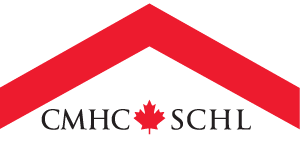Speaking Notes for Evan Siddall, President and Chief Executive Officer, Canada Mortgage and Housing Corporation
Global Risk Institute Conference
Saint James Club
Montréal, Québec
Check against delivery
I’m going to talk today about how we manage housing risk in Canada to promote financial stability. The economic crisis taught the world some harsh lessons about risk management, and many economies have yet to pay the bill from the experience.
Canada weathered the 2008 financial crisis well compared to many other economies but we always need to be thinking about the future – the next economic storm – to ensure that our housing finance system is adaptable and resilient.
Today’s discussion is timely for CMHC: we are re-examining our role in the Canadian housing and financial markets and looking to be part of an even more resilient system.
I will start my remarks by asserting a foundational premise: one of theraisons d’êtreof government involvement in housing finance systems is that government inherently assumes the tail risk. As much as we never want to use taxpayer money to bail out banks, governments consistently want to help home owners in the event of a generalized housing crisis.
As a Crown corporation — Canada’s national housing agency — CMHC therefore contributes to the stability of the financial system by providing mortgage loan insurance to lenders and by guaranteeing the timely payment of principal and interest on NHA MBS and CMB.
There is significant risk involved in both of these businesses. By backing CMHC, the Government of Canada has explicitly assumed the associated tail risks.
In return, Government makes the rules and is compensated for taking on the risk — to the tune of $18 billion in profits from CMHC alone over the past decade.
As a government entity, we need to have a different approach to risk management. Implicitly, we are in the bail-out avoidance business. Lenders pay us a premium to back them up if things go wrong.
So we have an explicit responsibility to manage tail risk and survive, since insolvency is a less obvious option for us.
Lots of work has been done on how corporations can better manage commercial risks, but in my view, too little attention has been paid to government’s management of tail risk.
We can’t assume away disaster scenarios, which the private sector implicitly can do through buying insurance, filing for bankruptcy protection or receiving overt bail-outs.
CMHC has an imperative to advise government on potential improvements to our housing system. This responsibility is central to the mission of CMHC, to our role as a risk manager and consistent with our vision of a world-leading housing system for Canada.
Some $550 billion of that risk sits on CMHC’s shoulders via our mortgage loan insurance business, and over $160 billion more is indirectly assumed by the government via its 90 per cent backing of mortgage loan insurance issued by our private sector competitors, Genworth and Canada Guaranty.
The B20 and B21 guidelines, both of which CMHC supports and embraces, have helped alleviate some of the implicit moral hazard in our mortgage insurance scheme.
Our task is to define a strategy for CMHC that preserves our buffering role in a crisis, while not assuming so large a market presence that we distort pricing to consumers.
Earlier this year, we measured our mortgage loan insurance programs against the yard stick of attending to Canadians’ housing needs — as opposed to wants, desires well-served by the private sector.
As a result of these and other changes, our insurance-in-force has begun to decline.
In our role as an adviser to government, we are evaluating a range of ideas on future improvements to our housing finance system, including risk-sharing with lenders to further confront moral hazard, future sandbox changes if housing markets are to become less stable, and increased capital requirements. I will return to capital shortly.
Economist Hyman Minsky warned of the risks of sowing the seeds of the next crises in advancing solutions to the last. He was talking about how stabilizers can reduce our perceptiveness of risk.
The analogy is imperfect but I cite it so that those of you in the banking business do not continue to rush to judgment that we are unaware of the consequences of our actions.
CMHC’s responsibility is to contribute to a durable financial stability, not to jeopardize it. We are committed to this outcome, and to consultations with the private sector as we consider new ideas.
As a risk manager, let me tell you why we aren’t overly worried about a housing bubble at this point in time, based on what we know. This “based on what we know” is an important caveat, and I’ll come back to that in a minute.
CMHC has the greatest collection of housing experts, expertise and information in Canada. We have developed a tool that is rooted in economic literature and has been tested vigorously. We call it the Housing Price Analysis and Assessment framework, or HPAA, and it enables us to assess multiple lines of evidence that we believe, again based on past experience, could point to a housing bubble.
The multiple line of evidence approach is more robust than the use of simple, popular two-variable charts, which consistently over-simplify complex market dynamics.
The HPAA examines a number of risk factors of problematic house price conditions, namely:
(1) overheating of demand in the housing market;
(2) acceleration in house prices;
(3) overvaluation in house prices; and
(4) over-building in the housing market.






 Share via Email
Share via Email
